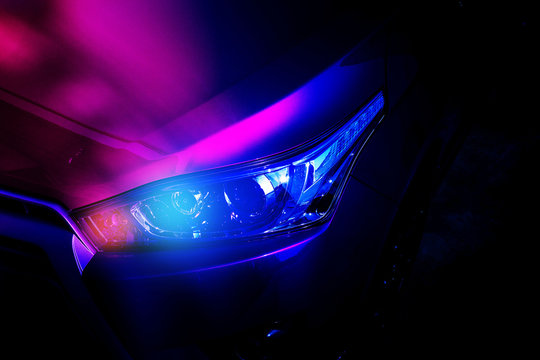EBL may be used to make photolithography masks for several applications. EBL takes time since the pattern must be written in a specific sequence. To reduce writing time, several approaches are employed. EBL devices used in industrial settings require extremely high acceleration voltages in most cases (50 kV).
However, electron beam technologies firms utilize more cost-effective equipment in many research contexts. They are, however, sluggish and built for high-resolution writing. In general, even for low-resolution applications, they are deemed insufficient for building large-scale structures with high pattern density. The authors demonstrate in this paper that changing the writing parameters may save writing time more than 40 times compared to normal instrument settings using the Raith e LiNE EBL.
The authors’ optimization method produced extremely accurate photolithography masks. According to the instrument software, the most often used settings took 14 days to create. Our pattern definition surpasses other chrome masks on the market.
There are numerous methods for printing without the need for a mask. The most common are ebeam technology, direct laser writing 1,2, and interference lithography. Alternative techniques, such as beam lithography and dip-pen lithography, are gaining popularity.
Lighting a resistor with a tightly focused electron beam reveals electron beam lithography (EBL). To create the final structure, the resist pattern might be handled in a variety of ways. EBL is not diffraction-limited under normal operating conditions because electrons have wavelengths in the picometer range or lower. Because of the resists and subsequent processing operations, high resolution in an EBL system is challenging. Because of its ability to write patterns with remarkable accuracy down to a few nanometers, EBL lithography is frequently used in numerous nanotechnology-related research fields.
The majority of patterning time in electron beam lithography resolution is spent on resist exposure, stage movement (for structures larger than a single write-field), and electron beam settling. EBL software may be used to ensure that the beam remains stable at each new location. The settling term is already included in this situation. Due to space charge effects, there is a physical limit to the maximum beam current that may be obtained. When just one beam is utilized for serial exposure, this value restricts the patterning time. Because the overall beam current is higher in the electron beam melting process when using these instruments, shaped beams and multi-beam exposure techniques may be used more quickly.
Both the exposure time and the idle time must be decreased to improve the write speed of any ion beam lithography device. When exposed to a 50 kV electron beam, newer resists, such as the negative tone resist SU-8, be as sensitive as 3.6 C/cm2.
Consider the following hidden approaches for enhancing electron beam lithography systems in lithography firms:
Table of Contents
How to Calculate Your Acceleration
The dose required to overcome resistance increases as the acceleration voltage increases. Why? Because forward-scattered electrons transmit energy to the resistor more effectively at lower acceleration voltages (10 kV), clearance dose requirements are decreased, although at the expense of a larger incident beam spot and rougher line surfaces.
Furthermore, the amount of clearance dose needed varies considerably depending on the developer type and development process.
Aperture Size for Collimation
An electron beam can be collimated and current-limited using a beamline with interchangeable apertures. A collimating aperture with a diameter of 120 microns was used to increase the beam current. More electrons from the filament were able to reach the sample as a result of this. A collimating aperture in the electron column is a common electron microscope component. It is essentially a way of adjusting the numerical aperture of the beam. Lower apertures result in a smaller numerical aperture and hence a larger depth of focus.
The High Current Mode Should be Turned on
Raith offers a “high current” option that modifies the focusing properties of the condenser lens to generate a narrower, more parallel beam. This setting doubles the beam current. Due to space charge effects, the eventual resolution will be slightly reduced, but the more limited, parallel beam will improve the depth of focus. We measured a beam current of 6.8 nA using a collimating aperture with a 120-meter diameter and an acceleration voltage of 10 kV.

Enter the Field Size Here
A standard writing field is 100 m 100 m in size. Because we used such a large write-field, we could replicate the pattern even with a 100-fold reduction in the number of write fields (the maximum is 2000 m 2000 m). As a result of the quicker sample stage moving and settling, the sample stage moving and settling time will be decreased 100. Using larger write fields has several drawbacks. The minimum step size must be reduced because the pattern generator’s digital-to-analog converter (DAC) has a limited addressable resolution. The addressable step size of the EBL is still rather small for write fields of 1000 m 1000 m.
Mode of Writing
There are two methods for moving the beam around in a write field: raster scan and vector scan. It is far the simplest technique, but it takes the longest to finish. As the beam goes across exposed areas, it unblanks. Technically more difficult, the vector scan leads the beam to each region that has to be exposed and only scans over the revealed sections. Utilizing a vector scan can save you time, but it is very dependent on the pattern being created, so keep that in mind while using it.
Beam Speed and Step Size
In the e LiNE design software, the GDSII Raith lithography module is employed. For integrated circuits, the GDSII format is extensively used. Bitmaps and other pattern file formats, as well as other file kinds, can be imported. You may import a bitmap into the e LiNE program using the “bitmap as reference” function. You can use the “bitmap as reference” format while using the line or meander modes. As the laser scans the whole write field, un- and exposure blanking will occur.




